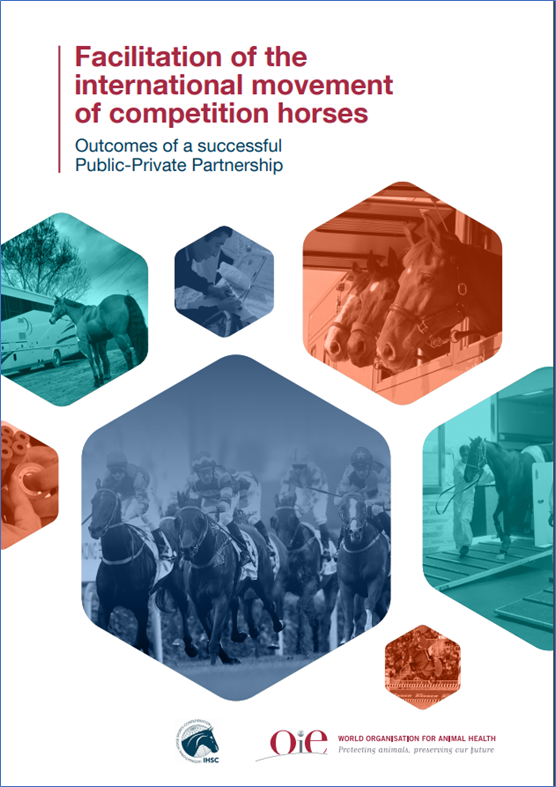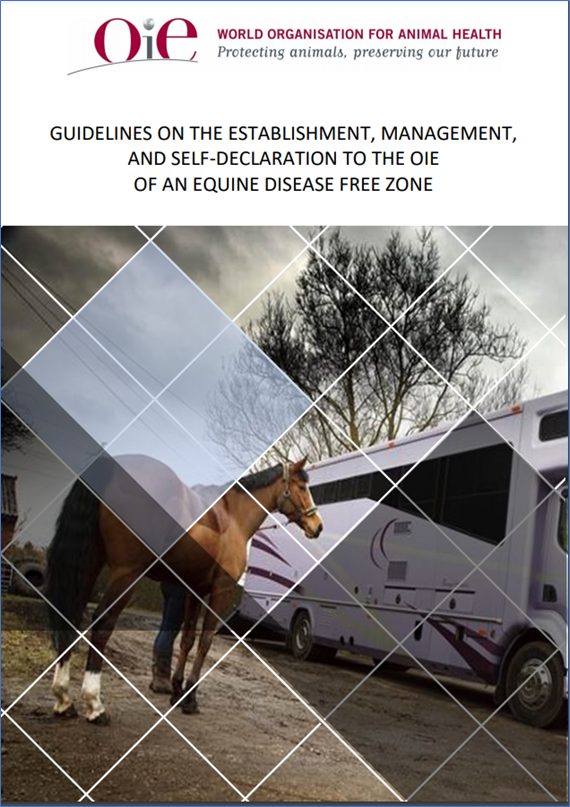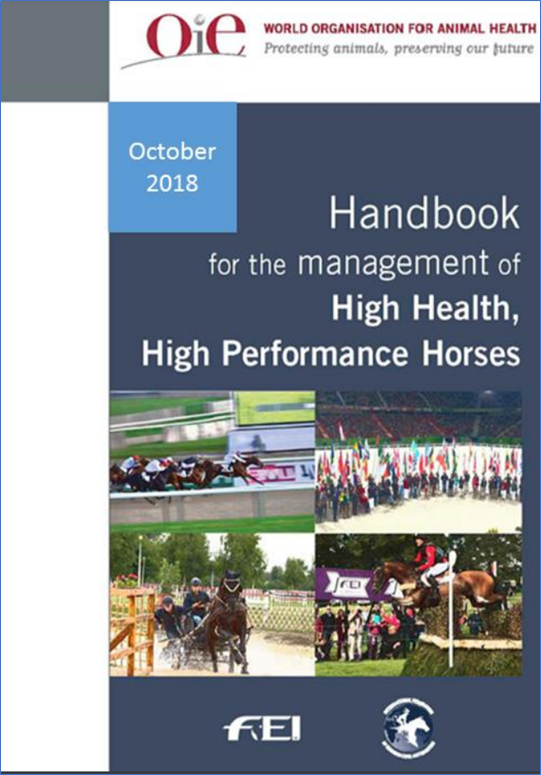International competition horse movement
Facilitation of International Competition Horse Movement
WOAH – IHSC partnership for safe international movements of competition horses
International movement of competition horses is a frequent practice globally. WOAH and the International Horse Sports Confederation (IHSC) are engaged in a public-private partnership to support safe cross-border movements of sport horses.
This collaboration resulted in the development of alternative tools, adapted from existing international standards described in WOAH’s Terrestrial Animal Health Code on zoning and compartmentalisation such as:
;- The establishment of Equine Disease Free Zones (EDFZ) for hosting international sports events and support the safe re-entry of competing horses in their countries of origin.
– The High health, High Performance (HHP) framework to enable countries and regions to harmonise their sanitary requirements for temporary importation and re-entry of competition horses.
WOAH and IHSC provide active support to regions to build capacities for safe temporary importations of sport horses for competition purposes, including by supporting the implementation of those alternative tools.
High health, high performance (HHP) horses
General principles of![]() the HHP framework, as well as supporting information on the management and biosecurity measures for HHP horses are available as follows:
the HHP framework, as well as supporting information on the management and biosecurity measures for HHP horses are available as follows:
– International standards on the general principles for the establishment of a High health status horse subpopulation are defined in the Terrestrial Animal Health Code – Chapter 4.17. They are an extension of the concept of compartmentalisation as defined in the Terrestrial Animal Health Code (Chapter 4.4. Zoning and Compartmentalisation).
– WOAH Guidelines for the management of HHP horses, including detailed biosecurity provisions and Model HHP Veterinary Certificates are defined in the HHP handbook.
The health status of HHP horses is safeguarded by the application of HHP standard conditions pertaining to veterinary supervision, identification and traceability and strict compliance with stringent biosecurity measures to create and maintain a functional separation between horses in the “high health equine subpopulation” and other equids, at all times, including the usual place of residence and venues of international competitions, and during transport. This compliance is ensured through continuous supervision.
A risk assessment (HHP disease risk mitigation strategies) demonstrated that, provided HHP standard conditions are continuously complied with, specific health requirements for the temporary importation of HHP horses for competition purposes can be limited to six diseases: African horse sickness, Venezuelan equine encephalomyelitis, equine influenza, equine infectious anemia, glanders and piroplasmosis.
Model HHP Veterinary Certificates listing specific health requirements for those six diseases for the initial certification of HHP horses and for onward travels are available as reference documents (HHP handbook).
Equine disease free zones (EDFZ)
The establishment of a zone which is free of multiple specified equine diseases (“Equine Disease Free Zone”- EDFZ) can be considered by countries that wish to host an international equine sport event but where the control and eradication of all equine diseases in the entire territory is not feasible or achievable.
The establishment of an EDFZ is an extension of the concept of zoning as defined in the Terrestrial Animal Health Code (Chapter 4.3. Zoning and Compartmentalisation). Separation of the subpopulation inside the EFDZ from the general population (i.e. equines and other species outside the EDFZ) is achieved by the implementation of sound biosecurity management, identification and control of movement and certification procedures. This separation ensures that horses within an EDFZ are protected from diseases that may occur in other parts of a country and vice-versa.
Guidelines to support countries in the establishment of EDFZ are available as follows:
– Guidelines on the establishment, management, and self-declaration to WOAH of an Equine Disease Free Zone, 2019
– Principles for the temporary establishment of Equine Disease Free Zones. A paper for the information of WOAH Members. August 2013
– Framework for the establishment of an Equine Disease Free Zone
Members that wish to self-declare an EDFZ to WOAH are invited to follow the Procedure for the application for the publication by WOAH of a self-declaration of disease freedom.
The list of Members having self-declared an EDFZ is available: Self-declared Disease Status – World Organisation for Animal Health (woah.org).



